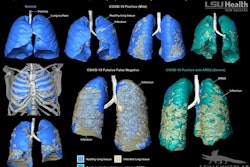Dear Digital X-Ray Insider,
You've heard of fluoroscopy, you've heard of digital tomosynthesis, but what about dynamic chest radiography? A new study on the technique is the subject of this edition's Digital X-Ray Insider.
Researchers in Japan have developed dynamic chest radiography, which uses a dynamic flat-panel digital detector to acquire images of patients during activities such as breathing. They believe that the technique could be useful for a number of clinical applications, while delivering an x-ray dose more or less the same as that of conventional digital radiography.
In a new study, they tested dynamic chest radiography for assessing whether lung tumors have invaded or adhered to lung tissue -- a development that would make them more difficult to resect. Read about the study in this edition's Insider Exclusive.
In other news, digital x-ray developer Nanox Imaging has been making headlines about its claims to have developed a low-cost digital x-ray system that will change the cost/performance equation for radiography. But the company's commercialization plans may have hit a snag recently after the U.S. Food and Drug Administration asked for additional details on its 510(k) application.
In the realm of surgical and interventional imaging, the market for these systems took a pounding in 2020 due to the COVID-19 pandemic, according to a report from U.K. market insights firm Signify Research. Growth is expected to return in 2021, however, according to the report.
In one of the stranger cases we've run across recently, clinicians in Florida used x-ray to help them identify a 3-cm spinning toy lodged in the throat of an 83-year-old woman with dementia. The presence of the toy had been missed by junior radiology residents who initially interpreted the images, but fortunately, it was picked up on subsequent interpretations and removed.
In other news in the world of digital x-ray, a recent study found racial disparities in the use of medical imaging for pediatric emergency cases, with Black and Hispanic children less likely to be imaged than white kids. And in a recent guidance, the National Council on Radiation Protection on January 13 advised against the use of gonadal shielding for patients receiving imaging studies, saying it could interfere with image quality.
And be sure to check out this story on the use of artificial intelligence to improve lung cancer detection on x-rays, as well as a request for proposals on a project to develop software tools to assist radiology professionals with performing quality assurance and dosimetry on x-ray equipment.
Be sure to return to the Digital X-Ray Community early and often to get the latest updates on medical imaging's most widely used modality!



















